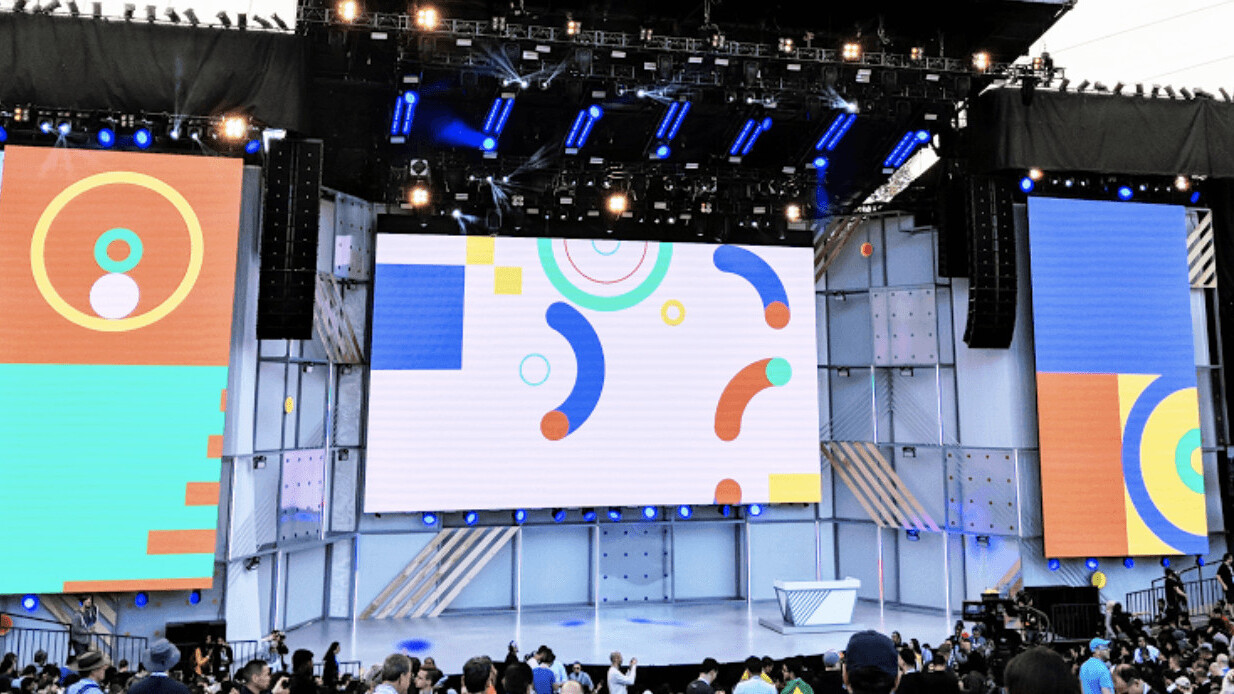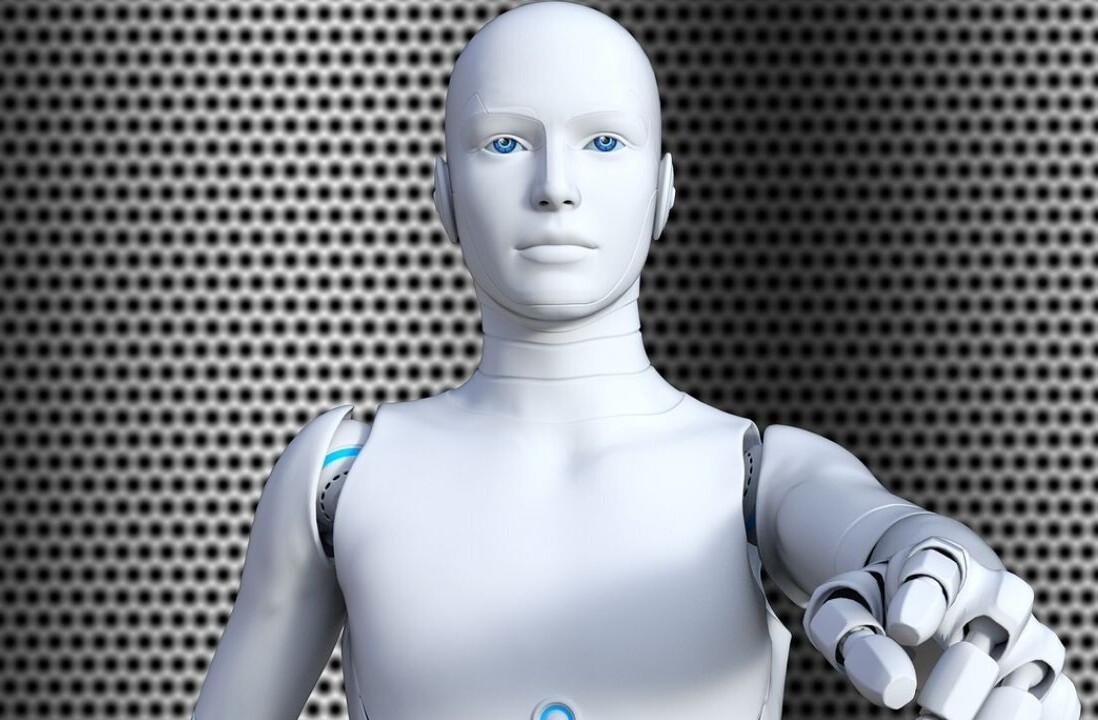
As CEO Sundar Pichai took the stage at Google’s annual developer conference, the running joke was trying to decide which chat app the company would introduce — only to kill with a competing project at this time next year.
It didn’t happen.
But that doesn’t mean there’s nothing to talk about.
Suggested Actions for Photos
Google has again raised the bar for artificial intelligence in Photos. The company introduced a handful of actions for mobile photo editors including options to brighten, colorize, or add additional styling options in a hands-off way involving some truly excellent AI. It’ll be able to colorize black and white (or sepia) images, strip color from the background (while keeping it in the foreground), and adding additional editing options to stylize or make simple edits.
Read more: Google debuts Suggested Actions for fixing and sharing your photos
Six new voices for Google Assistant
Google Assistant will soon have six new voices for users to choose from. One of these will be of Grammy award-winning recording artist, John Legend. As Legend tells it, the assistant will be available soon on phones, Google Home products, and “in your heart.”
Read more: Google announces six new voices at #IO18 — Include John Legend
Pretty Please
Google Assistant is tired of your crap, we all are. Baked into the Assistant now is the “Pretty Please” function, a feature that (when turned on) requires you to say “please” or it’ll refuse to carry out the command.
It’ll also use positive reinforcement to remind you, saying things like “thanks for saying please,” or “you’re very polite.”
All in all it’s a great feature for ensuring the kids of the future don’t turn into intolerable little shits.
Read more: Google Assistant puts an end to impolite queries with ‘Pretty Please’ feature
Google Assistant becomes a real assistant… really.
Easily one of the coolest things we’ve seen on day one is Google’s updated assistant. Now, our favorite mobile assistant has capabilities that rival a physical one, with the ability to make calls to schedule reservations, a haircut appointment, and more. I was shocked at the lifelike nature of it, including both voice and vocal cues — such as adding nuanced bits of language like “hmm” to signify thinking when it tried to schedule an appointment at one time, and the person on the other end of the phone informed it that this time was unavailable before offering a new one.
We’ll see it on any device with the Google Assistant later this year.
Read more: Google Assistant now schedules your appointments with a phone call
Google wants to improve quality of life with features designed to break your tech addiction
‘Digital Wellbeing’ is Google’s attempt to balance online and offline time by understanding your habits — as well as those of your family — and helping you to switch off your digital lives on occasion.
Google says:
We’re creating tools and features that help people better understand their tech usage, focus on what matters most, disconnect when needed, and create healthy habits for the whole family.
It’s a simple idea. Google wants to cut down on FOMO by 0ffering in-app solutions to let you monitor where you’re spending time online. It’s a suite of dashboards on your Android device that breaks down app usage, as well as providing gentle reminders during YouTube binges or other apps you’ve had open a while. Tying it all together is a “notifications digest” that sends you a once-daily recap of notifications so you can disconnect, at least on occasion.
Read more: Google aims to improve ‘Digital Wellbeing’ by reminding users to disconnect on occasion
Android launches Shush and Wind Down to keep your phone off when it needs to be off
Android P beta available today!
Google’s long-awaited beta for the upcoming Android P is available today, as a beta. As with all beta releases, expect bugs and it’s probably only advisable to grab it on a secondary device this early. That said, the latest OS will be available on Google’s Pixel devices as well as seven other flagships from other companies. Presumably, this will be companies like HTC, Sony and others.
Read more: Android P Beta launches today — and it’s not just for Pixel phones
Google News wants to fix journalism
Google News is harnessing the power of AI to show each of us more relevant content. When you first open the app, the first five stories in your briefing will be those custom tailored to your personal tastes and interests. In addition, it’ll help you to automatically avoid topics or publishers you aren’t all that fond of.
The AI will attempt to sort stories chronologically, giving you an on-the-fly timeline during events still taking place, sort of like Twitter’s Moments, only driven by artificial intelligence rather than human editors, and one that doesn’t necessarily prioritize large publications over the smaller local outfits that could be more relevant during periods of breaking news.
Google is also attempting to solve one of journalism’s biggest problems by making it easier to pay for your favorite publications. If you’re signed into Google, you’ll be signed into paywalled sites you subscribe to, no matter which device you’re on — and it works even if you switch devices.
Read more: Google News aims to fix journalism by offering an easy way to pay for it
Google uses your camera to help you figure out which direction you’re facing in maps (for walkers)
We’ve all had this problem at one point or another. Google Maps tells you to head south on Main Street, and you have to do the little dance that involves turning around to see if the blue dot is facing the same direction you are. No more.
Now, Google will use the camera (as well as the GPS) to help orient you when walking, thus eliminating the unfortunate reality of looking like a crazy person while you turn in circles to orient the blue dot.
Read more: Google will now use your camera to help you figure out which direction you’re facing in Maps
Google and Waymo look to tackle driving in foul weather
Waymo is working on ways to improve the way self-driving cars perform in bad weather, including identifying and protecting pedestrians in ways that humans may not be able to. Spotting a construction worker with his head just peeking above the surface of a manhole, for example, is a job probably best left to AI. By overcoming these vision issues, Google and Waymo hope to inch one step closer to the truly autonomous vehicle we’re all waiting for.
Read more: Google and Waymo are tackling the biggest obstacles on the way to truly autonomous vehicles
Check out our event page for more Google I/O stories this week, or follow our reporters on the ground until the event wraps on Thursday: @bryanclark and @mrgreene1977
Get the TNW newsletter
Get the most important tech news in your inbox each week.




